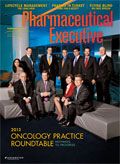NHTSA Addresses "Drugged Driving"
Pharmaceutical Executive
After years of asking questions, the National Highway Traffic Safety Administration (NHTSA)is moving closer to a protocol "for assessing the driving-impairment risks of drugs". Ben Comer reports.
Pharma is familiar with a lot of US government acronyms—HHS, FDA, CMS, SEC, DOJ, OIG, OPDP, and many more—but NHTSA (pronounced "nitzah") may not ring a bell. It stands for the National Highway Traffic Safety Administration, an agency housed within the US Department of Transportation. After years of asking questions and convening panels, NHTSA is moving closer toward the goal of establishing a "structured, standardized protocol for assessing the driving-impairment risks of drugs," pharmaceutical, OTC, and illicit.
The issue of driving on meds gained greater visibility in early January, when FDA announced that it would require lower recommended doses of zolpidem, an atypical benzodiazepine best known as the sleep drug Ambien, and its generic predecessors. Pharmaceutical drugs, of course, aren't illegal when taken as prescribed, and they don't show up on a breathalyzer during a traffic stop. There isn't (yet) an FDA drug label that prohibits driving while using a prescription drug. But that doesn't mean patients taking certain antihistamines, antidepressants, benzodiazepines, and other therapies aren't driving around under these drugs' influence, to an extent that demonstrably increases the chances of a fender-bender, if not a full-blown crash.

The miniSim, a PC-based driving simulator, evaluates levels of impairment.
In November 2008 and again in March 2009, NHTSA convened a panel of international experts including behavioral scientists, epidemiologists, pharmacologists, toxicologists, and traffic safety professionals to determine whether medications, or classes of medications, could be designated as safe or unsafe for driving. If this determination could be made, the information would lead to better-informed prescribing practices, a more rational selection of medications by patients, and ultimately, fewer crash-related fatalities on American roads and elsewhere, according to the report.
The panel's findings, described in NHTSA's "Drugged Driving Expert Panel Report: A Consensus Protocol for Assessing the Potential of Drugs to Impair Driving," dated March 2011, suggest a tiered protocol for a standardized and validated way to assess different kinds of impairment. In addition to pharmacological, toxicological, and epidemiological review, a drug must ultimately be put to the road test. Enter the $80 million National Advanced Driving Simulator (NADS), a warehouse-sized simulator completed in 2001 and located at the University of Iowa. This state-of-the-art simulator is one of the most advanced and immersive driving simulators in the world, but it's not exactly convenient, logistically, for use in clinical trials.
The NADS miniSim, a lower-cost PC-based simulator, however, was designed with clinical applications in mind, and isn't stuck in Iowa. In fact, Gary Kay, one of the NHTSA expert panelists, and formerly director of the neuropsychology division of the neurology department at Georgetown University's School of Medicine, now heads a company called Cognitive Research Corporation, which has a worldwide exclusive license to use the NADS miniSim for pharmaceutical, food, and beverage clinical testing. Kay has served as principle investigator on clinical trials studying the effects of pharmaceuticals on cognition, mood, and psychomotor performance (he also invented CogScreen, a cognitive screening test used by, among others, the FAA, to assess the cognitive capabilities of pilots).
Kay says FDA is interested in looking at other medicines and therapies (in addition to Ambien) and their effects on driving, and Cognitive Research Corporation is already working with major pharmaceutical players in the development of new drugs, and also in post-market research on existing products with the potential to impair driving. Generating data around a product's effects on driving can prove, in a validated, standardized way, that a product is safe (or safer than the competition), which could deliver a valuable selling point in crowded therapeutic areas, like sleep drugs, for example. Simulation isn't the same as "real-world" driving, of course, but hopefully it will help prevent drugged drivers in the real world from crossing into your lane.
Ben Comer is Pharm Exec's Senior Editor. He can be reached at bcomer@advanstar.com
Adderall Shortage Drives Shift to Alternative ADHD Medications in Children
January 29th 2025Prescription data between 2017 and 2023 revealed that while Adderall prescription fills decreased following the shortage, many children transitioned to alternative stimulants for attention-deficit/hyperactivity disorder.
